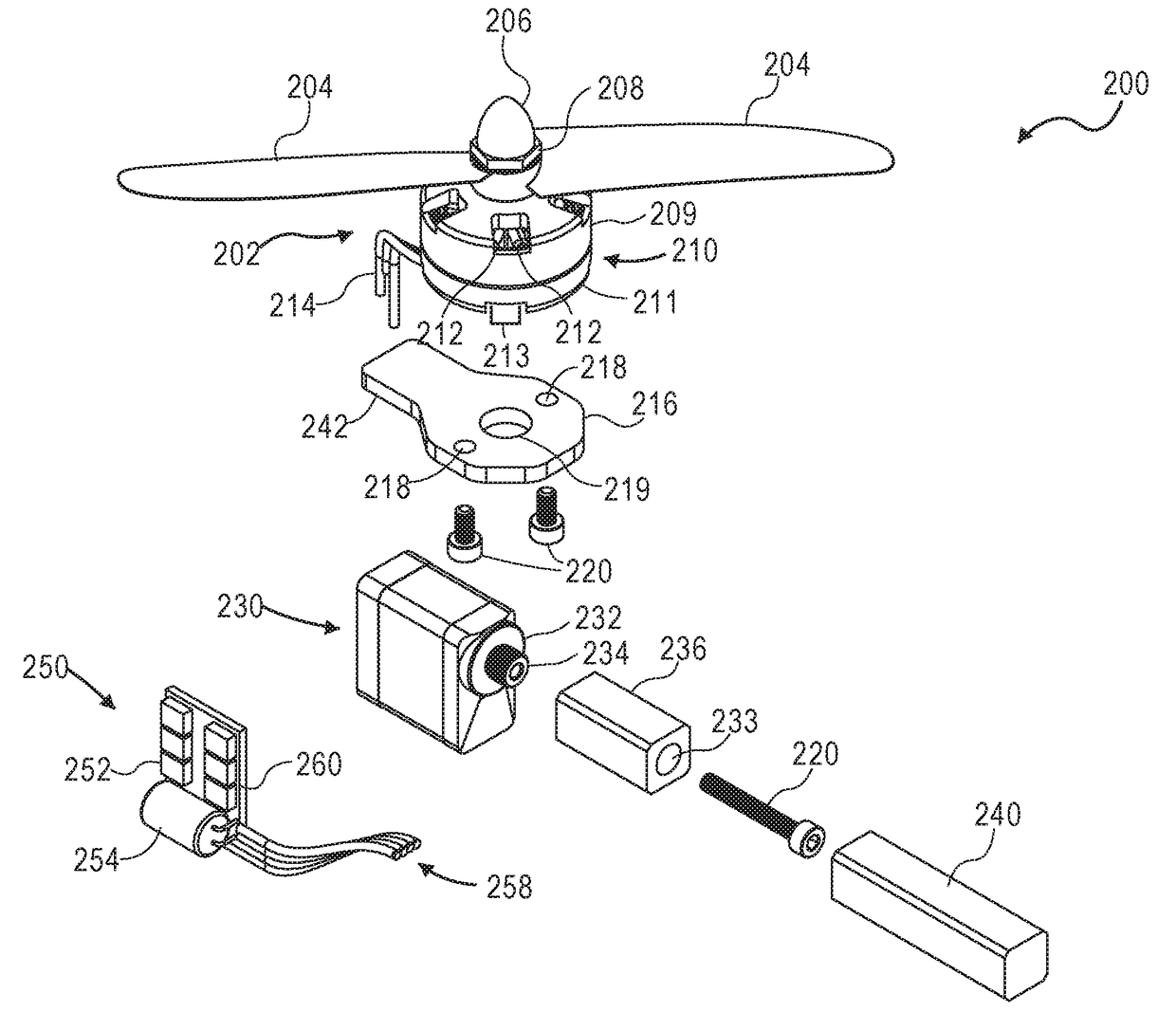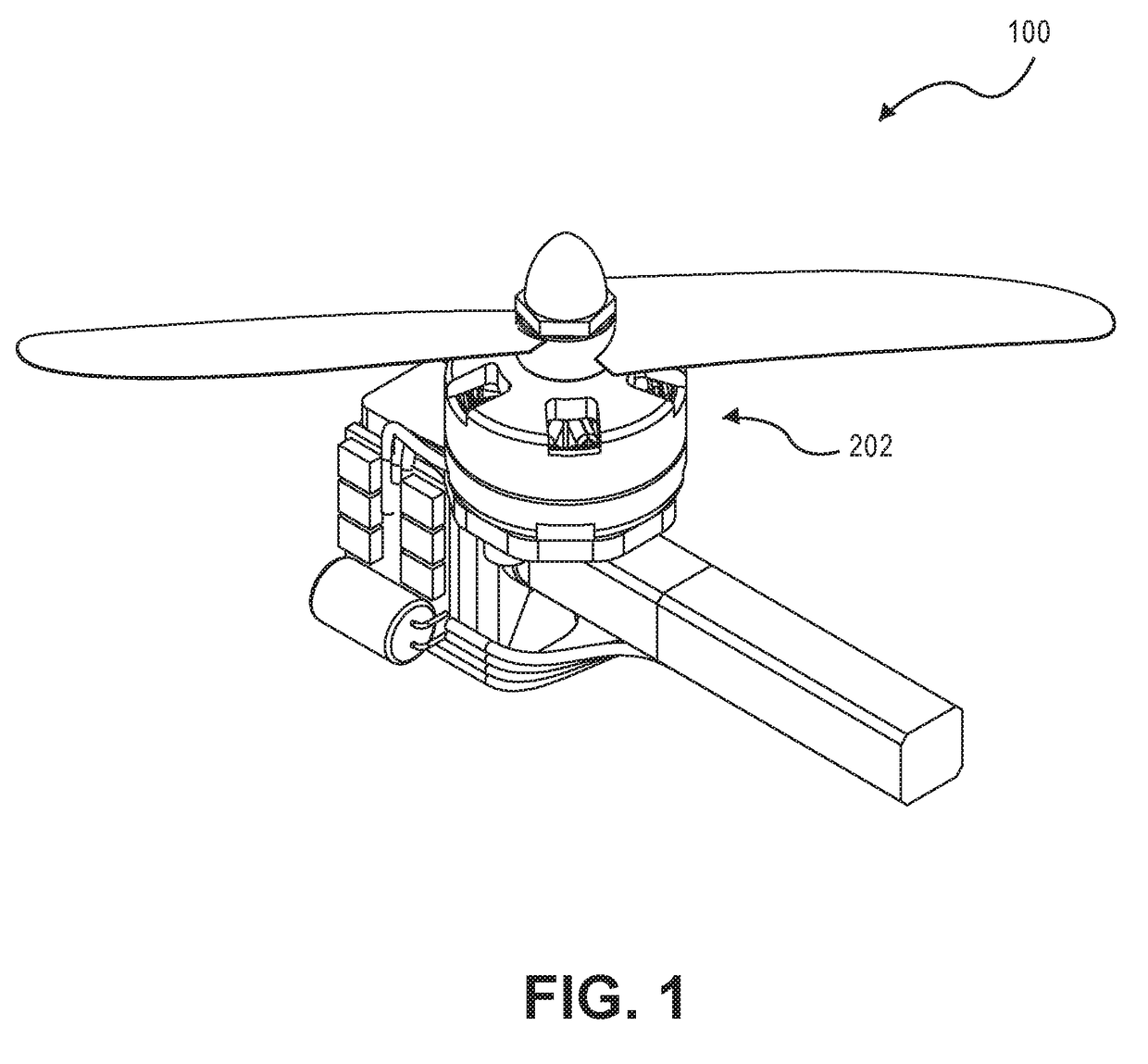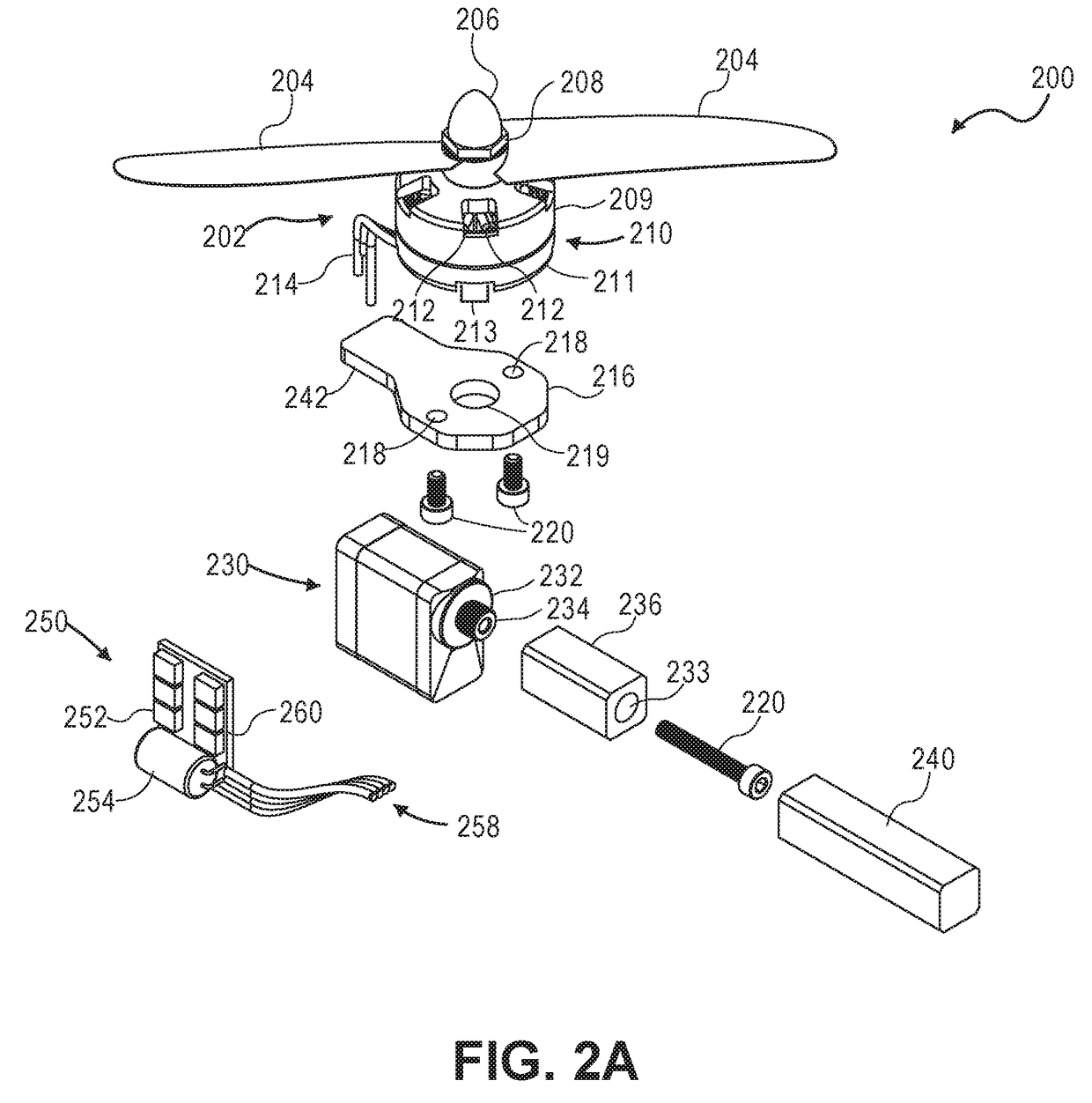Gimbaled thruster configuration for use with unmanned aerial vehicle
a technology for aerial vehicles and thrusters, which is applied in the direction of propellers, vertical landing/take-off aircraft, transportation and packaging, etc., can solve the problems of poor endurance, more difficult launch and landing, and difficult construction of uav tilt-rotor mechanisms
- Summary
- Abstract
- Description
- Claims
- Application Information
AI Technical Summary
Benefits of technology
Problems solved by technology
Method used
Image
Examples
example 1
[0093]A vectored thrust control module for an aircraft having an aircraft structure comprising: a stationary servo system that includes a motor and an output shaft, wherein the stationary servo system is configured to connect at the output shaft to a servo system output arm; a bladed component configured to rotate and provide thrust; and a thrust motor assembly mounted directly to the servo system output arm of the servo system, wherein the thrust motor assembly further includes a motor that is configured to rotate the bladed component.
example 2
[0094]The vectored thrust control module according to example 1, wherein a thrust line of the thrust motor assembly aligns with a joint of the servo output shaft and frame receptacle, so as to minimize extraneous torques carried across the joint.
example 3
[0095]The vectored thrust control module of any one of examples 1 to 2, further comprising an electronic speed control unit mounted to one of the following: a frame component on the aircraft structure or the servo system, and the electronic speed control unit further powers the servo via an integrated power conditioning circuit.
PUM
 Login to View More
Login to View More Abstract
Description
Claims
Application Information
 Login to View More
Login to View More - R&D
- Intellectual Property
- Life Sciences
- Materials
- Tech Scout
- Unparalleled Data Quality
- Higher Quality Content
- 60% Fewer Hallucinations
Browse by: Latest US Patents, China's latest patents, Technical Efficacy Thesaurus, Application Domain, Technology Topic, Popular Technical Reports.
© 2025 PatSnap. All rights reserved.Legal|Privacy policy|Modern Slavery Act Transparency Statement|Sitemap|About US| Contact US: help@patsnap.com



